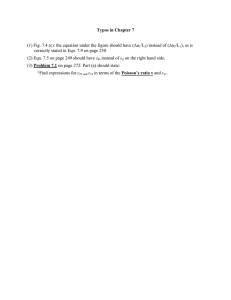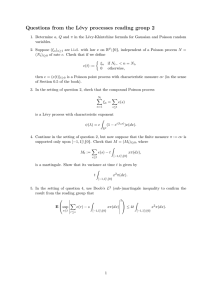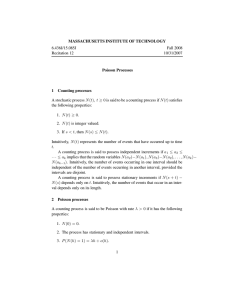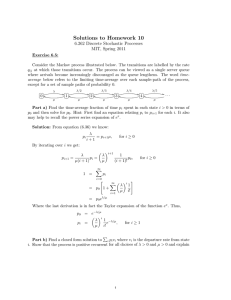MASSACHUSETTS INSTITUTE OF TECHNOLOGY 6.436J/15.085J Fall 2008 Lecture 21
advertisement
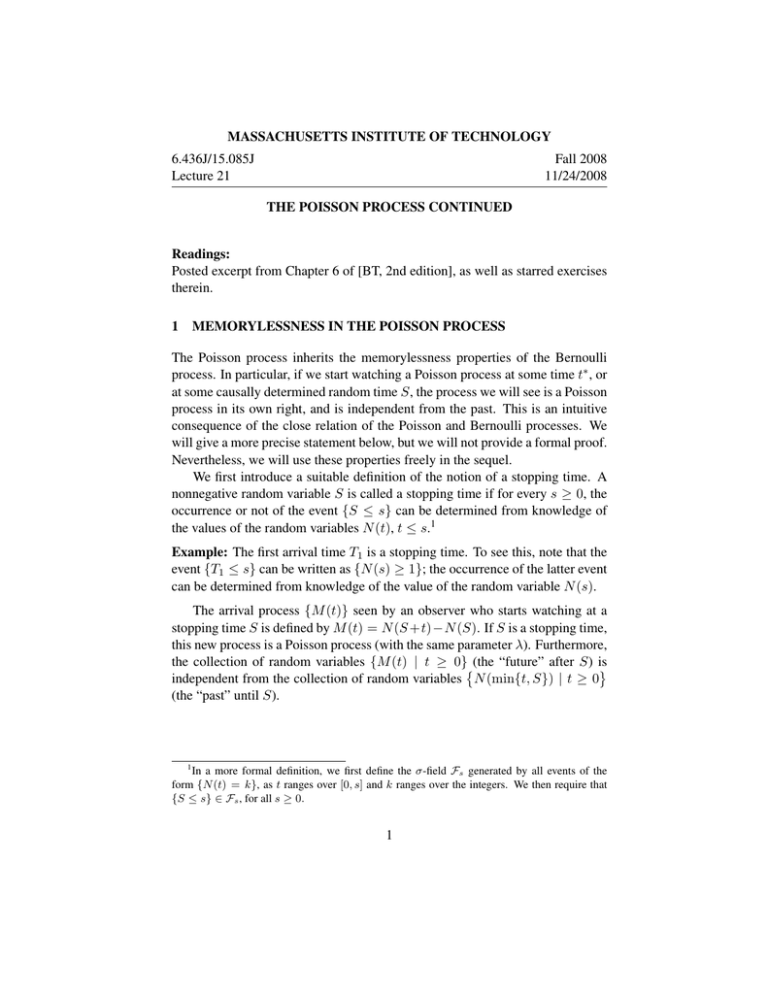
MASSACHUSETTS INSTITUTE OF TECHNOLOGY
6.436J/15.085J
Lecture 21
Fall 2008
11/24/2008
THE POISSON PROCESS CONTINUED
Readings:
Posted excerpt from Chapter 6 of [BT, 2nd edition], as well as starred exercises
therein.
1
MEMORYLESSNESS IN THE POISSON PROCESS
The Poisson process inherits the memorylessness properties of the Bernoulli
process. In particular, if we start watching a Poisson process at some time t∗ , or
at some causally determined random time S, the process we will see is a Poisson
process in its own right, and is independent from the past. This is an intuitive
consequence of the close relation of the Poisson and Bernoulli processes. We
will give a more precise statement below, but we will not provide a formal proof.
Nevertheless, we will use these properties freely in the sequel.
We first introduce a suitable definition of the notion of a stopping time. A
nonnegative random variable S is called a stopping time if for every s ≥ 0, the
occurrence or not of the event {S ≤ s} can be determined from knowledge of
the values of the random variables N (t), t ≤ s.1
Example: The first arrival time T1 is a stopping time. To see this, note that the
event {T1 ≤ s} can be written as {N (s) ≥ 1}; the occurrence of the latter event
can be determined from knowledge of the value of the random variable N (s).
The arrival process {M (t)} seen by an observer who starts watching at a
stopping time S is defined by M (t) = N (S +t)−N (S). If S is a stopping time,
this new process is a Poisson process (with the same parameter λ). Furthermore,
the collection of random variables {M (t) | t ≥ 0}�(the “future” after S) is
�
independent from the collection of random variables N (min{t, S}) | t ≥ 0
(the “past” until S).
1
In a more formal definition, we first define the σ-field Fs generated by all events of the
form {N (t) = k}, as t ranges over [0, s] and k ranges over the integers. We then require that
{S ≤ s} ∈ Fs , for all s ≥ 0.
1
MIT OpenCourseWare
http://ocw.mit.edu
6.436J / 15.085J Fundamentals of Probability
Fall 2008
For information about citing these materials or our Terms of Use, visit: http://ocw.mit.edu/terms.

